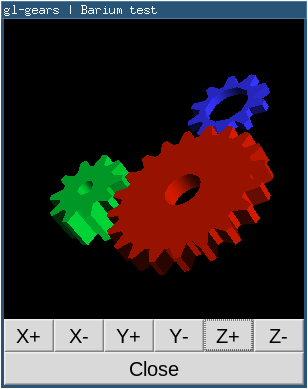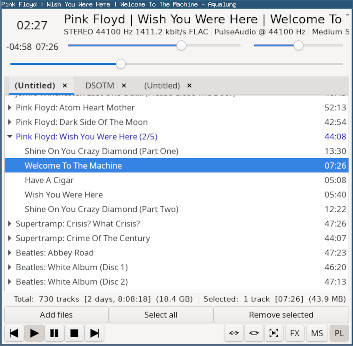There’s been a lot of buzz about GUI stuff lately, which made me briefly reflect on the state of the art and share something I’ve been working on as of late.
The Aqualung music player had its 2.0 release earlier this week. This new major release comes a solid decade after the preceding one (Aqualung 1.0 was released in 2015).
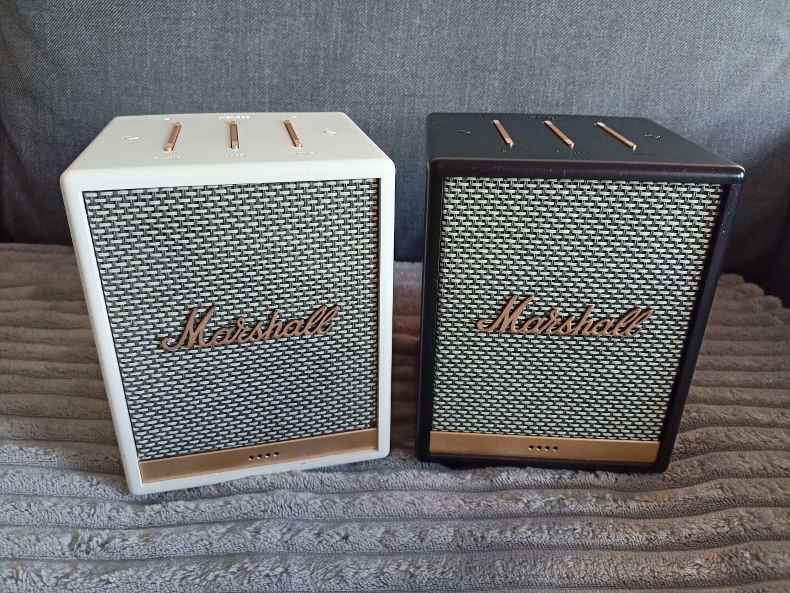 De-smarting the Marshall Uxbridge
De-smarting the Marshall Uxbridge
This is the story of a commercially unavailable stereo pair of the bi-amped Marshall Uxbridge, with custom-built replacement electronics: active filters feeding two linear power amps. Listening to this high-fidelity set has brought me immense enjoyment. Play a great album on these near-fields, and the result is close to pure magic! Over and above the accurate reproduction of a wide audio range, the precision and depth of its stereo imaging is stunning.
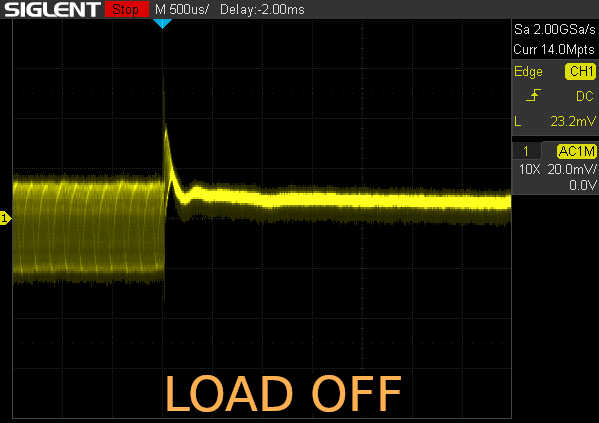 Taming the buck with a Type III compensator
Taming the buck with a Type III compensator
I recently designed and built my first DC/DC converter, a synchronous buck regulating some hefty DC currents. It turned out to work okay-ish (except the overvoltage crowbar), but I had a nagging feeling that it could (and should) be improved further.
Even though the prototype made it through a testing regime of load currents (up to the full rated load of 5A) effected via mechanical switches without self-destructing, one thing that kept bothering me was the substantial ringing in response to a modest 1A load step.
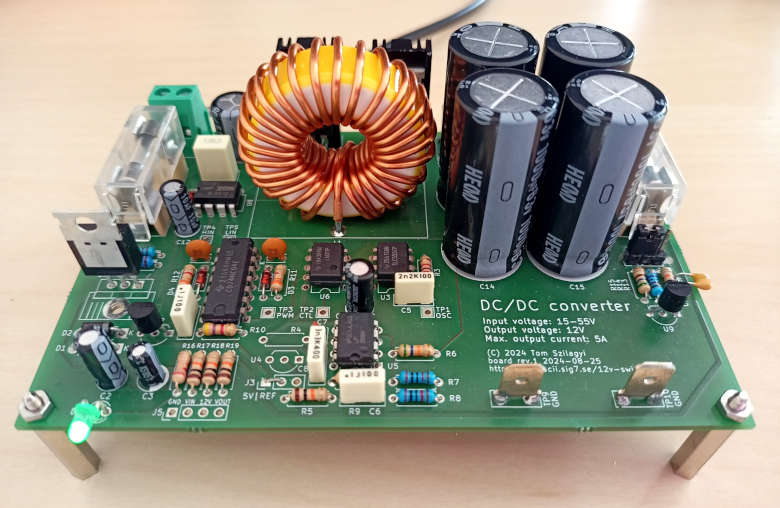 Synchronous buck converter for 12V/5A output
Synchronous buck converter for 12V/5A output
What is the logical next step after making a linear regulator? I learned some valuable lessons (both regarding general electronics and power supplies) doing that project, so I believe I could now make a much better linear supply. And perhaps I will! But now I decided it was time to aim for a switch-mode power supply (SMPS), a.k.a DC/DC converter.
This article documents my take on a synchronous buck regulator for outputting 12V at currents up to 5A, from an input voltage that is nominally 48V, but in practice can be between 15V and 55V. This circuit is my original design, so I will go into a lot of detail on how it works, and share ample measurement data around its performance and efficiency.
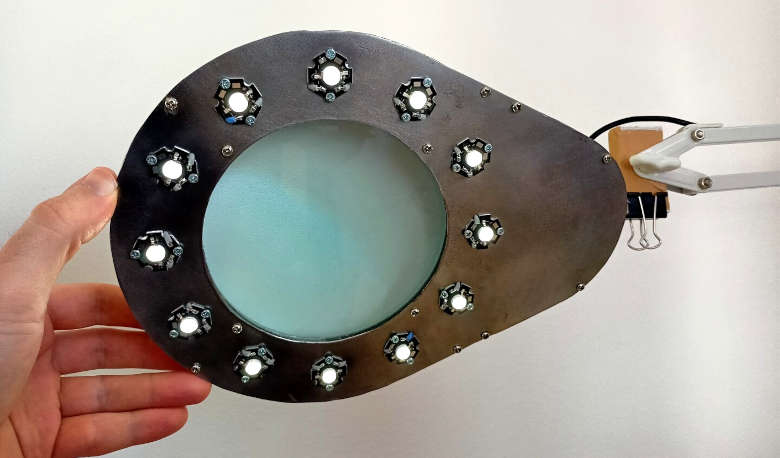 Magnifying LED Superlamp (2500 lumens, dimmable)
Magnifying LED Superlamp (2500 lumens, dimmable)
The first 15 years or so in the life of this lamp were spent as originally intended: as a TOOLCRAFT magnifying lamp (model 8066/EU), sporting a 22W G10q circular fluorescent bulb. It ran trouble-free for several thousand hours, allowing me to look at small stuff through its large (⌀12 cm) magnifier glass, and serving as a desk and ambient light. It even survived moving across international borders (and then some).
 My new PSU burns out! I fix it, and torture it by cracking water...
My new PSU burns out! I fix it, and torture it by cracking water...
My brand new PSU, the most complicated circuit I designed and built just recently, started life in October 2023. It seemed to work pretty well, at least I got through the long and dark winter with it feeding my LED Superlamp. (Most of the time. The rest of that time, I was using it for something it was actually intended for, i.e., the feeding of an experimental new circuit. By the light of a torch.)
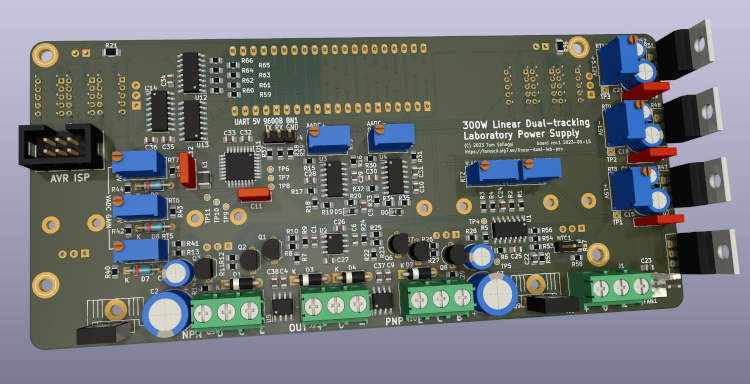 300W Linear Dual-Tracking Lab Supply
300W Linear Dual-Tracking Lab Supply
So what to do with all the newly acquired experience of creating finely detailed circuit boards, SMT and all?
Something I badly needed: a bench-top power supply to facilitate further lab work. Able to output a stable, symmetrical supply voltage (for feeding op-amp circuits, push-pull power amplifiers, etc.) and provide plenty of current. Having settable current limits (protecting both itself and the circuit being fed) and precise digital meters of everything (voltage and currents on both sides) is a bonus.
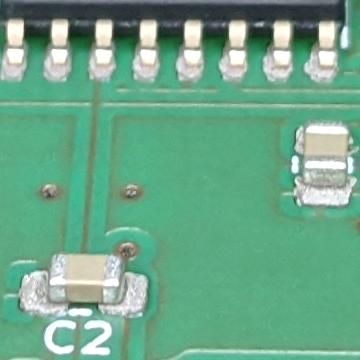 SMT and the ultimate LCD-SPI interface
SMT and the ultimate LCD-SPI interface
After having completed several electronics projects from idea to finished gadget, and gained experience with self-designed PCBs, I felt it was finally time to face the elephant in the room. What elephant? The predominant electronics technology I never dared to touch before: SMT a.k.a surface-mount technology. Given that virtually all industrially produced electronics is surface mounted, and has been for several decades, there is a ceiling of how serious you can get before coming to terms with it. And that ceiling is pretty low.
There is never enough light, is there? Especially during the Nordic vinterhalvår (a lovely Swedish word for the half year that is winter).
And besides, I needed some excuse to do a no-stress chill-out hardware project for testing out some PCB manufacturing details, such as curved corners and hole cut-outs. I also wanted to try my hands at building a USB-chargeable portable circuit powered by a 18650-size LiPo battery – that know-how is going to be useful in any number of future gadgets. And above all, this is going to be lots of fun, with all the light emitting functionality completely defined in software. This way the actual workings can be tuned or completely altered long after the electronics is done!
